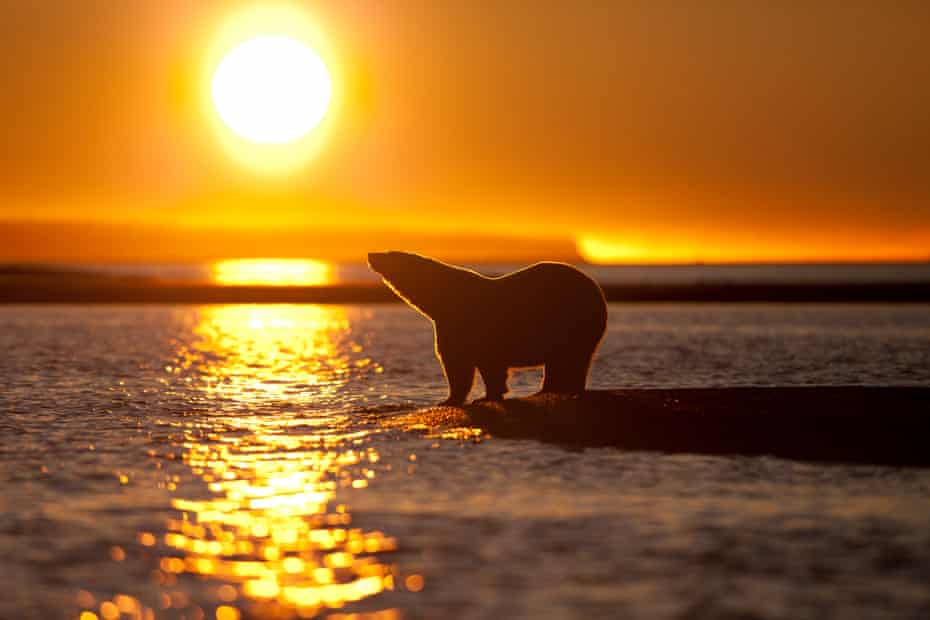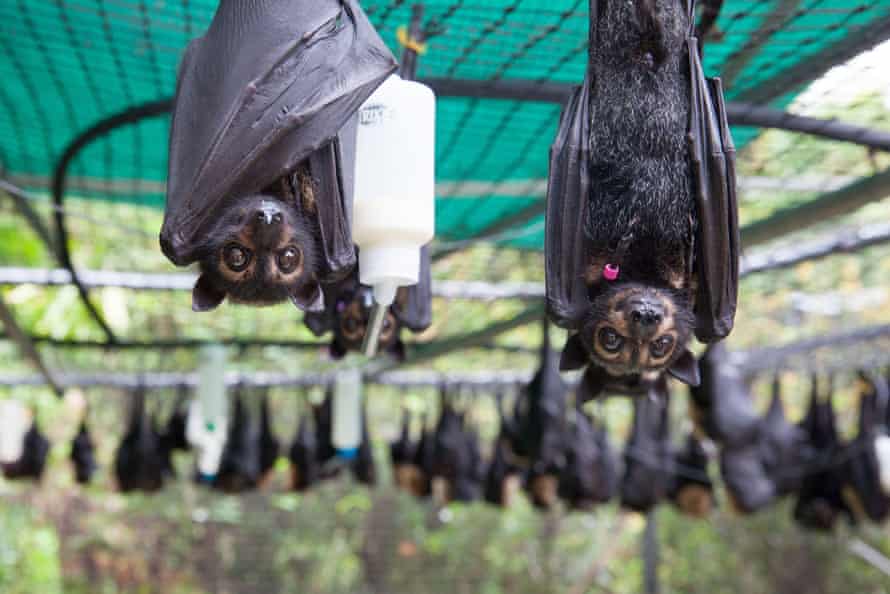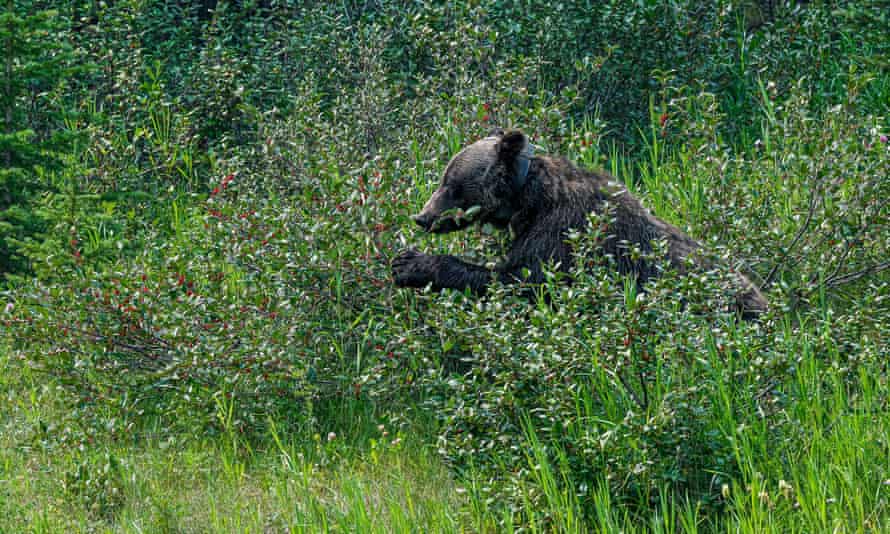The heat is on: from the Arctic to Africa, wildlife is being hit hard by climate chaos
Global heating affects fertility, immunity and behaviour – often with lethal results – and the problems are getting worse

Last modified on Fri 22 Oct 2021 07.57 EDT
Sweating, headaches, fatigue, dehydration – the ways heat exhaustion affects the human body are well documented. As temperatures inch up year by year we need to change the way we live, creating cooler places that provide refuge from heat.
But what about wildlife? We know mass die-offs are becoming more common as heatwaves sweep terrestrial and marine ecosystems, but incremental increases in temperature, which are much harder to study, are harming almost all populations on our planet.

Earlier this year, for the first time, a paper was published on the impact of heat stress in large Arctic seabirds. Normally, research on species in that corner of the world is about adaptations to the cold, but in an era of climate chaos, learning to live with heat is the new challenge.
Emily Choy, a biologist from McGill University in Montreal, Canada, has been studying a colony of thick-billed murres on the cliffs of Coast Island in Hudson Bay after reports of birds dying in their nests on warm days. These black-plumed birds spend summer months perched on cliffs in full sun with little shade. Males and females alternate 12-hour shifts sitting on their eggs.
Their high metabolisms keep them warm when diving in waters that are 8C and cooler, so when faced with temperatures of 21C, the birds struggle to keep cool, panting and flapping their wings, according to the paper published in the Journal of Experimental Biology. As the Arctic warms at twice the global rate, these temperatures are becoming increasingly common.
“When we compared our data, we could really only do comparisons with desert species that are well adapted for heat,” says Choy. “Most of the work that has been done on thermal physiology in Arctic species has focused on heat conservation.

“Murres are cold-adapted and basically specialised for Arctic environments, so they are quite sensitive and could be possible canaries in the coalmine for the impacts of climate change,” she adds.
As well as undergoing physical changes, animals across the world are changing their behaviour – murres, for example, are spending more time getting into the water to cool off, leaving their eggs exposed to gulls and Arctic foxes. For parents, it’s a trade-off between keeping cool enough to avoid heat stress and protecting their young.
Many birds with similar ecological niches are at risk. Endangered bank cormorants risk overheating when sitting on eggs on exposed, rocky cliffs in southern Africa, according to research published in Conservation Physiology.
“This puts a lot of stress on the adults, and when the adults leave the nest to cool down, the eggs and chicks are more exposed to the sun and predators. A lot of eggs and chicks can be lost in a particularly hot summer,” says Dr Henry Hakkinen from the Zoological Society of London, one of the paper’s authors. Great skuas in Shetland are spending more time bathing to avoid overheating, again leaving eggs and chicks exposed to predators.
Lots of animals face similar challenges. Research shows that in hotter temperatures grizzly bears in Alberta, Canada, look for more closed, shaded vegetation, while in Greece, brown bears are more likely to be active at night. Making these changes has knock-on effects and is a trade-off for spending less time hunting for food, or looking out for predators.

Although heatstroke is an issue, the main cause of mortality is a change in behaviour that leads to wildlife being more vulnerable in their environment. “I think heat stress is the very obvious big thing, but that is really the far extreme of climate change impacts. That’s really the worst case,” says Dr Daniella Rabaiotti, a researcher at the ZSL Institute of Zoology. “Often I think we’re seeing population level effects that aren’t this big population crash from heat stress, but I don’t think we have a full understanding of quite how widespread these impacts are at the moment.”
Her research focuses on endangered wild dogs, which – unlike Arctic birds – are well adapted to heat. But rising temperatures are making it too hot for them to hunt and pup survival is plummeting. “They’re not getting as much food because they have less time to hunt,” says Rabaiotti.
Habitat loss is key in exacerbating wildlife’s ability to respond to the climate crisis. Humans have destroyed so much habitat, many populations of wild animals have been left fragmented and unable to move and find cooler areas in response to changes in their environment. Wild dogs, Ethiopian wolves, red wolves, tigers, lions and cheetahs have all lost more than 90% of their ranges.
“Animals suffer when they can’t do anything,” says Rabaiotti. “You’ll probably see a correlation between how much range of a species is lost, and how hard it is going to get hit by climate change.”
In terms of knowing what conservation efforts to implement in which places, we need to keep using and gathering data from long-term projects, says Rabaiotti. This is because impacts are often localised and environment specific. “A lot of climate change is focused on very large-scale impacts,” she says. “If you’re someone working on the ground to conserve that species, that only tells you what’s going to happen in the future, not how to fix it.”

It may also be that heat is restructuring populations in ways that we don’t understand yet because we haven’t been looking out for it. Research from 2020 suggested that the expansion or decline of bumblebee species could be driven by their resistance to heat stress during extreme weather events.
“Several studies show that bumblebees are extremely sensitive to extreme temperatures but not all species are equal when it comes to heat stress,” says Prof Pierre Rasmont from the Universite de Mons, one of the paper’s authors. Boreal and Arctic species, for example, appear to be highly sensitive to heat stress. “Mechanisms triggering these responses to stressful temperatures are still under-explored in bumblebees and further studies are needed to understand physiological responses to environmental stresses.”
Research is just starting to scratch the surface of understanding how heat affects ecosystems. Stresses induced by hot temperatures can cause all kinds of problems, including the growth of organisms, fertility, immunity, mortality and changes in behaviour.
As the climate crisis escalates we will need to know more about how heat is affecting populations across the planet. “I think it’s just really key if there’s a species of conservation importance that we ask these questions – how is the population going to be impacted? And how do we stop those impacts? That’s where I would like to see more research,” says Rabaiotti.
Find more age of extinction coverage here, and follow biodiversity reporters Phoebe Weston and Patrick Greenfield on Twitter for all the latest news and features
